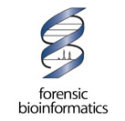Genophiler® Public Validation
Introduction
Genophiler® is an automation tool used to operate GeneScan® and Genotyper® and collect the resulting data. Genophiler® is essentially a macro that has programmed all of the same mouse clicks and keystrokes that a trained person would use to operate the analysis software. Genophiler® creates PDFs of all output screens to allow for a summarized review of the electronic data without the underlying analysis software. In addition, Genophiler® creates summary tables containing the labeled peaks for each tested sample and an automated report containing a list of potential issues that may require further attention (such as the presence of possible mixtures, peak height imbalances, pull-up, etc.). These potential issues are identified using generally-accepted methods and all methods are explained in the Genophiler® outputs.
Genophiler® has been developed from the ground up to be completely transparent. Every action is fully documented. In addition, all data files are provided, including sample files, size standards, analysis parameters, GeneScan® projects, and Genotyper® projects with macros. Anyone who knows how to operate GeneScan® and Genotyper® can replicate any or all of the Genophiler® analysis.
Genophiler® has been used to automate the electronic analysis of forensic DNA sample data in more than 700 cases. Genophiler® has been extensively validated since its development and it continues to be evaluated with every case that we review. In 2004, Genophiler® had a formal validation involving 740 samples. That study was published as a poster at the 16th Promega meeting on human identification:
S. Ford, J. Gilder, C. Rowland, B. Kelly, and M. Raymer. Validation study of the Genophiler® automated data review system. Poster at the 16th International Symposium on Human Identification. Promega. Phoenix, AZ. October 2004. Abstract
The Ford et al. (2004) validation study relies heavily upon data associated with confidential casework. A representative Genophiler® case from that data is available for public review. A large amount (approximately 300 megabytes) of data associated with ongoing, subsequent validation is also available for critical evaluation by the general public.
Materials and Methods
Data for this study were obtained from 50 STR-based DNA testing runs generated by four analysts working at Forensic Analytical Specialties, Inc. (Hayward, CA) using the laboratory's validated standard protocols (e.g. no additional rounds of amplification were used as might be the case for low-copy-number analyses). All DNA profiles were generated with the Profiler Plus® commercial testing kit during the course of actual casework associated with approximately 150 cases conducted between 2004 and 2006. Each run was performed on the same Applied Biosystems 310 Genetic Analyzer and contained: a positive control; a negative control; and a reagent blank. A positive control consisted of template DNA from the 9947A immortal lymphoid cell line. This positive control DNA is provided by the manufacturer of the test kit and its STR genotype is well characterized. Negative controls begin at the amplification step and contain all of the reagents used for amplification (but no template DNA). A reagent blank is a sample that contains all of the reagents used from the beginning of the extraction of a sample through amplification and typing, but again containing no template DNA. When a single run contained more than one injection of a given control, the last injection was used. No other information associated with a run (e.g. that associated with reference or evidentiary samples) was used.
The sample data was collected on a Macintosh-based system, so the sample files were first analyzed using Macintosh GeneScan® v3.2.1 before being imported into Genophiler®. GeneScan® sample files store the results of their analysis, including the analysis parameters used and the separated electropherogram trace. Genophiler® operates Windows GeneScan® v3.7.1 and Genotyper® v3.7. Genophiler® can reproduce the samples' last analysis by simply omitting the step of clicking the "analyze" button in GeneScan®. The default GeneScan® analysis parameters were used for all analyses, including RFU threshold, minimum peak half width, polynomial degree, peak window size, and baseline window size. The limit of detection (LOD) and quantitation (LOQ) calculations are based on published work:
J. Gilder, T. Doom, K. Inman, and D. Krane. Run-specific limits of detection and quantitation for STR-based DNA testing. Journal of Forensic Sciences. 2007;52(1):97-101. Data, Software
Results
The Genophiler® validation analysis can be viewed on-line HERE. Positive Control 1 was labeled as the reference sample for the defendant to illustrate how Genophiler® performs allele coloring. The summary table lists every sample that produced at least one on-ladder peak. Each peak is listed with its allele call followed by its peak height in parentheses. Genophiler® makes no determination whether a labeled peak is a true allele, it simply transcribes the electropherogram. The second part of the summary table lists potential issues, including the presence of potential mixtures (containing loci with three or more labeled peaks), pull-up (two labeled peaks occurring in two different channels at approximately the same position), and peak height imbalance (two peaks at a locus differing by more than 70%). Genophiler® does not make any judgment calls. Any potential issues that Genophiler® flags should be examined carefully before drawing any conclusions.
The 19 allele at the D18 locus for Positive Control 8 is labeled as being off-ladder. The default Genophiler® table lists only on-ladder peaks. An addditional Genophiler®table includes off-ladder peaks. The off-ladder allele can be manually confirmed by examining the electropherogram.
On-going validation
We welcome the outside review of this validation data. Please let us know if there is anything we can do to make Genophiler® easier to use or more clearly understandable. Please send comments, questions, and suggestions to help@bioforensics.com. Thank you for participating in this public validation study.


